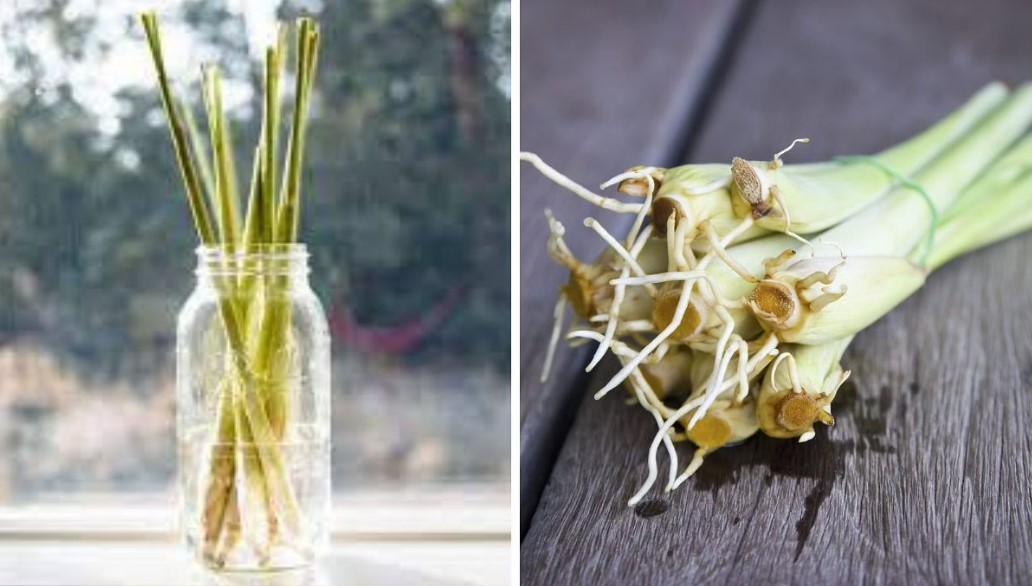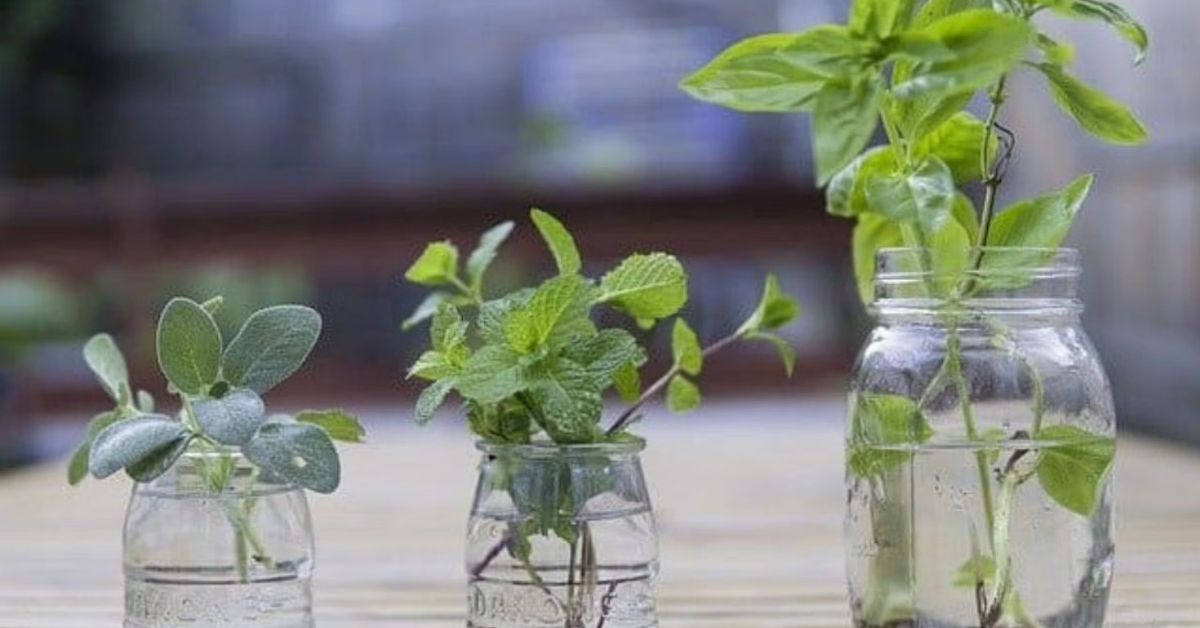Want to use freshly picked ingredients from your kitchen garden to cook delicious meals?
Even if you don’t have enough space, you can grow everyday herbs like lemongrass, rosemary, and mint right inside your kitchen.
How? Through a small hydroponic setup near the kitchen platform or window.
This can help you grow fresh herbs that fulfil the requirements of one family, without any complications or even soil.
Urban gardening expert Reshma Renjan, who lives in Bokaro, Jharkhand, shares a few simple steps you can do this in, with only a handful of containers and water.
1. Lemon Grass
Collect a few strands of lemon grass from a friend’s garden or from the market. Make sure its roots are also included. Leave it in a glass or container full of water. Give it a little sunlight and leave it aside. You will spot new roots and leaves sprouting from the plant within 15 days.
If you have space in the garden, you can also grow it in soil using the same steps. In fact, this will provide you faster results, in less than 10 days.
Use your fresh lemongrass in a cup of steaming tea or for an additional flavour punch in a variety of curries.

2. Rosemary
This aromatic herb is a must-have in most Italian dishes like pizzas, pastas and lasagnas, or even in flavoured rice.
Collect a six-inch cutting of rosemary from any garden or market. Pluck the leaves from the lower portion and place the cutting in water. Within 10 days, roots will emerge from the cuttings. After 20 – 25 days, you will be able to spot new branches and leaves. Remember to change the water once a week.
Did you know that besides being a delicious accompaniment to meals, rosemary can also help keep mosquitoes away? Check out how here.
3. Mint
Mint is one of the easiest herbs to grow in a garden. Let’s try to grow this in water this time.
Gather three or four mint cuttings from the market. Take two containers — one small and one big. Make a few holes on the top of the small container. Remove the leaves from the bottom portion of the cuttings and place them in these holes.
Now fill the other container with water and place the small box with the cuttings inside it.
Place the container in an area that receives ample sunlight. Change the water once a week. The leaves will grow out within a few days and you will spot new white roots inside the small box.
4. Indian borage/ Mexican mint
Considered a variety of celery because of its fragrance, Mexican mint has several medicinal properties. It can be added to tea or drinks to improve both flavour and smell.
This mint can easily be grown in abundance on soil as well as water. As the plant gets dense fast, it is better to place it in a large-mouthed container. Use three or four cuttings of the plant and place it in a container filled with water. New roots will sprout within a week and leaves start developing in 10 days. Keep changing the water every alternate day for faster results.
This herb is ideal for flavouring meat dishes, soups, and stews.
5. Italian Basil
Basil is another essential Italian herb and is very easy to grow.
It grows upto three inches long with dark green leaves and has a spicy, fragrant taste. The herb is used extensively in salads, to flavour the crostini in bruschettas, and while cooking pesto or other sauces.
Like with mint leaves, take two containers in different sizes. Place two or three cuttings through the holes made in the smaller jar. Place this jar inside the bigger one filled with water.
Within 10 days, you should see roots and new leaves.
Here are some additional tips to be kept in mind while growing all these herbs:
- Change the water inside the containers frequently (preferably alternate days) till new roots and stems develop. Once the growth begins, change water once a week.
- To aid faster growth, add any hydroponic fertilisers to the water. You can also use seaweed fertiliser, which dissolves in water easily.
- Prune the roots once a month.
- In case of insect attacks, dilute neem oil and spray it once a week.
Follow Reshma’s YouTube channel for more information on hydroponic gardening.
Read this story in Hindi here.
Edited by Divya Sethu; Photo credits: Reshma Renjan
If you found our stories insightful, informative, or even just enjoyable, we invite you to consider making a voluntary payment to support the work we do at The Better India. Your contribution helps us continue producing quality content that educates, inspires, and drives positive change.
Choose one of the payment options below for your contribution-
By paying for the stories you value, you directly contribute to sustaining our efforts focused on making a difference in the world. Together, let's ensure that impactful stories continue to be told and shared, enriching lives and communities alike.
Thank you for your support. Here are some frequently asked questions you might find helpful to know why you are contributing?

